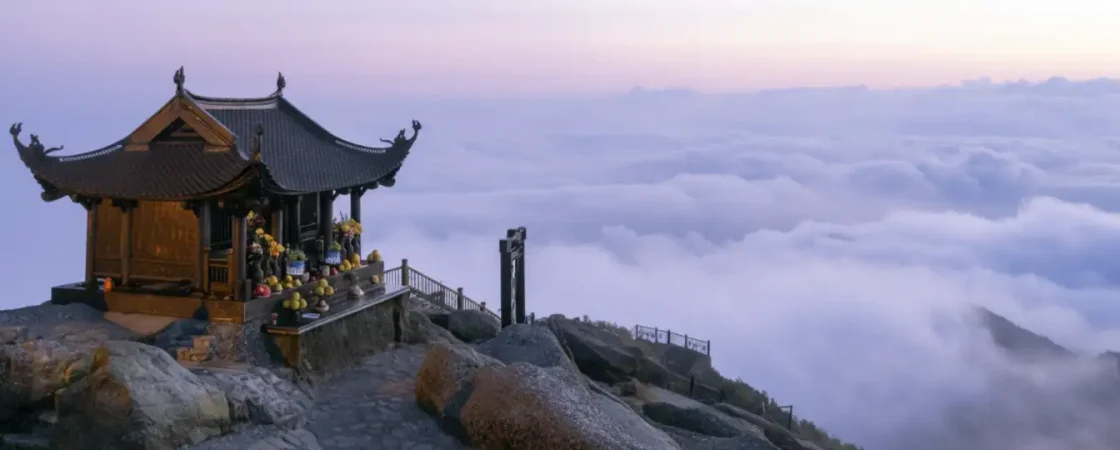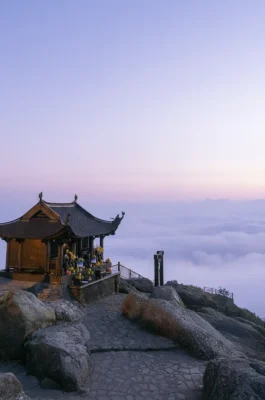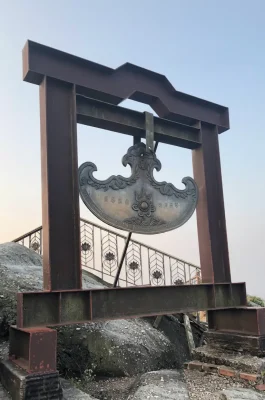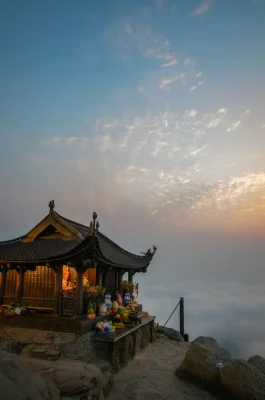Chùa Đồng Yên Tử: A Spiritual Zenith in the Clouds
Chùa Đồng, or Đồng Pagoda, stands as one of Vietnam’s most profound spiritual destinations, sitting majestically at the summit of Yên Tử Mountain in Quảng Ninh Province. This sacred site, also known as Thiên Trúc Tự (Heavenly Temple), reaches an altitude of 1,068 meters above sea level. The journey itself represents a pilgrimage, offering a powerful blend of cultural heritage and breathtaking natural scenery.
History and Cultural Significance
Yên Tử Mountain holds deep spiritual importance as the birthplace of the Trúc Lâm Zen Buddhism sect. Emperor Trần Nhân Tông (1258–1308) founded this unique Vietnamese Zen branch after abdicating his throne to pursue Buddhist teachings on this mountain. Therefore, the entire Yen Tu complex serves as the spiritual heartland of Vietnamese Buddhism.
The Bronze Marvel: The original Đồng Pagoda was constructed in the 17th century during the Late Lê Dynasty. Today’s structure, however, represents a monumental reconstruction completed in 2007. Artisans cast the current temple entirely out of pure bronze, earning it the distinction of being the largest bronze pagoda on a mountaintop in Asia. The pagoda covers an area of nearly 20 square meters and weighs a remarkable 70 tons.
Architecture: The architecture features delicate carvings and motifs, reflecting the style of the Trần Dynasty. Inside, visitors worship the Buddha Shakyamuni and the Tam Tổ Trúc Lâm (Three Founders of the Trúc Lâm Zen Sect).
Pilgrimage: The annual Yên Tử Festival begins on the 10th day of the first lunar month and draws millions of pilgrims, who climb the mountain to pray for peace and prosperity.
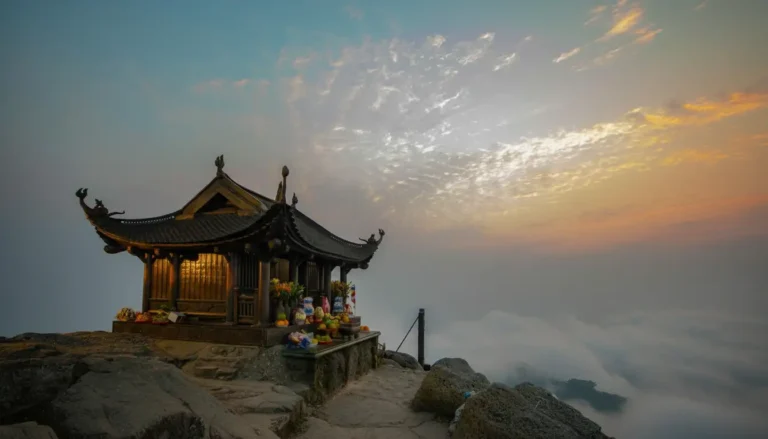
Getting There: Hike or Cable Car
You have two primary options for reaching the pagoda at the peak, allowing you to tailor your experience to your fitness level and time constraints.
The Challenging Hike: Pilgrims traditionally embark on a demanding trek, covering approximately 6 kilometers and over 6,000 stone steps from the base (Suối Giải Oan – Giai Oan Stream). This strenuous journey takes about 4 to 6 hours one way, rewarding hikers with a deep spiritual connection and unspoiled views.
The Convenient Cable Car: For a faster, easier ascent, you can use the modern cable car system. The system comprises two main routes, transporting guests to various pagodas along the way, including Chùa Hoa Yên (Hoa Yên Pagoda). The cable car significantly reduces the walking time to the final stretch below Chùa Đồng, offering stunning aerial views of the mountain forest.
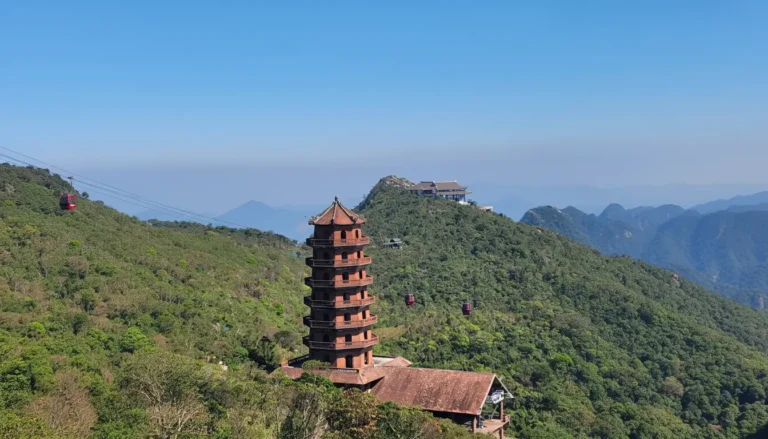
Visitor Information and Facilities
Preparing for your trip ensures a comfortable and respectful visit.
| Item | Details and Cost (Approximate) | Important Notes |
|---|---|---|
| Opening Hours | Generally 7:00 AM – 6:00 PM (Off-Season) | Operating hours extend during the peak festival season (Lunar New Year - Jan to Mar). |
| Entrance Fee | VND 40,000 per adult | You pay a general entrance fee to the Yen Tu complex at the base. |
| Cable Car Ticket | VND 350,000 for a full round-trip (both routes) | Children under 1.2 meters and seniors (70+) often receive free tickets. |
| Facilities | Rest areas, shops for snacks/water, and restrooms are available at the lower and middle-mountain pagodas. | Make sure you wear sturdy, comfortable shoes for the final ascent to the summit. |
| Address/Location | Đỉnh Yên Tử, Uông Bí, Quảng Ninh 207900, Vietnam | This confirms the location is the summit of Yên Tử Mountain. |
Consequently, visitors must wear modest clothing to show respect at this major spiritual site. Furthermore, carry adequate water and snacks, especially if you plan to hike the entire route.
